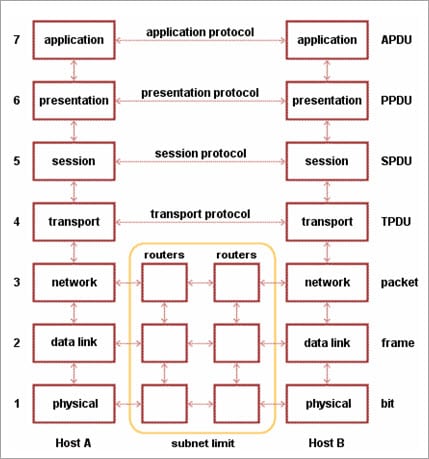| Physical |
Bit |
- It is concerned with transmitting raw bits over a communication channel.
- Chooses which type of transmission mode is to be selected for the transmission. The available transmission modes are Simplex, Half Duplex and Full Duplex.,
|
| Data Link |
Frame |
- The main task of this layer is to transform a raw transmission facility into a line that appears free of undetected transmission errors.
- It also allows detecting damaged packets using the CRC (Cyclic Redundancy Check) error-detecting, code.
- When more than one node is connected to a shared link, Data Link Layer protocols are required to determine which device has control over the link at a given time.
- It is implemented by protocols like CSMA/CD, CSMA/CA, ALOHA, and Token Passing.
|
| Network |
Packet |
- It controls the operation of the subnet.
- The network layer takes care of feedback messaging through ICMP messages.
|
| Transport |
TPDU - Transaction Protocol Data Unit |
- The basic functionality of this layer is to accept data from the above layers, split it up into smaller units if needed, pass these to the network layer, and ensure that all the pieces arrive correctly at the other end.
- The Transport Layer takes care of Segmentation and Reassembly.
|
| Session |
SPDU - Session Protocol Data Unit |
- The session layer allows users on different machines to establish sessions between them.
- Dialogue control is using the full-duplex link as half-duplex. It sends out dummy packets from the client to the server when the client is ideal.
|
| Presentation |
PPDU - Presentation Protocol Data Unit |
- The presentation layer is concerned with the syntax and semantics of the information transmitted.
- It translates a message from a common form to the encoded format which will be understood by the receiver.
|
| Application |
APDU - Application Protocol Data Unit |
- It contains a variety of protocols that are commonly needed by users.
- The application layer sends data of any size to the transport layer.
|
